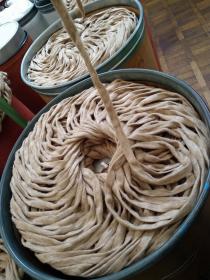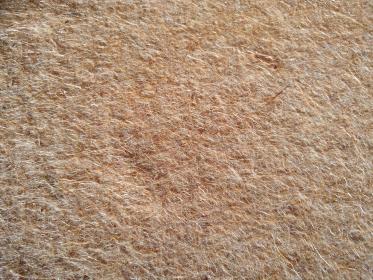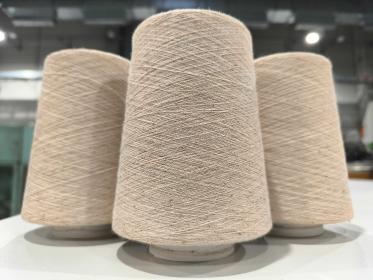Kendyr – a climate-friendly alternative to cotton
In many arid regions of the world, particularly in Central Asia, decades of irrigation of cotton fields are increasingly leading to soil salinisation – with serious consequences for soil fertility and thus the future of cotton cultivation. In the long term, this development jeopardises the global supply of raw materials for the textile industry. An international research co-operation with the participation of Sächsisches Textilforschungsinstitut e.V. (STFI) has therefore investigated the potential of alternative raw material plants, especially kendyr. The aim was to clarify whether salinised arable land in Central Asia could be made agriculturally usable again using adapted plant species, thus enabling new textile value chains to be established.
What was the motivation behind this?
Cotton cultivation, which has been established in Central Asia for more than 70 years, has led to some far-reaching negative effects on the natural production bases in the region. The increasing effects of climate change require the search for alternatives to supply the textile industry with raw materials. The project investigated options for the yield-oriented cultivation of apocynum ssp. (kendyr) on former cotton sites and the production of textile-processable fibre qualities. The aim was to develop a process chain for the production of ultra-fine textile fibres as an equivalent for regionally produced and processed cotton.
What solution was chosen and which results have been achieved?
During the project period, only apocynum straw from wild collection was available for process development. The stalks were harvested on site, sorted and mechanically opened in Germany. The remaining shives were almost completely removed and the fibre bundle structure was broken down to 90 dtex. The fibre length was shortened to cotton staple length.
Degumming was necessary to further refine the fibre bundles. This halved the fibre fineness down to 40 dtex. With the subsequent carding, it could be further reduced to 5.6 dtex. This means that, apart from hemp fibres of Chinese origin, kendyr fibres come closest to cotton in terms of the fibre fineness achieved of all the types of bast fibres available regionally in Germany. Similar to colour-grown cotton, it has a unique, slightly rust-red inherent colour.
The fibre was processsably spun on production scale blended with 70 % cotton into a ring yarn 30 tex (Nm 34) and knitted as a lightweight knitted fabric (110-140 g/m²).
Cooperation partners
- Martin-Luther-Universität Halle-Wittenberg
- Leibniz Institute for Agricultural Engineering and Bioeconomy (ATB)
- HANFFASER Uckermark eG
- hessnatur stiftung
- Sachsen-Leinen e.V.
- International partners from Central Asia
 Photo Sächsisches Textilforschungsinstitut e.V. (STFI)
Photo Sächsisches Textilforschungsinstitut e.V. (STFI)
 Photo Sächsisches Textilforschungsinstitut e.V. (STFI)
Photo Sächsisches Textilforschungsinstitut e.V. (STFI)
Sächsisches Textilforschungsinstitut Sächsische Textilforschungsinstitut e.V. cotton Kendyr yarn
Sächsisches Textilforschungsinstitut e.V. (STFI)


